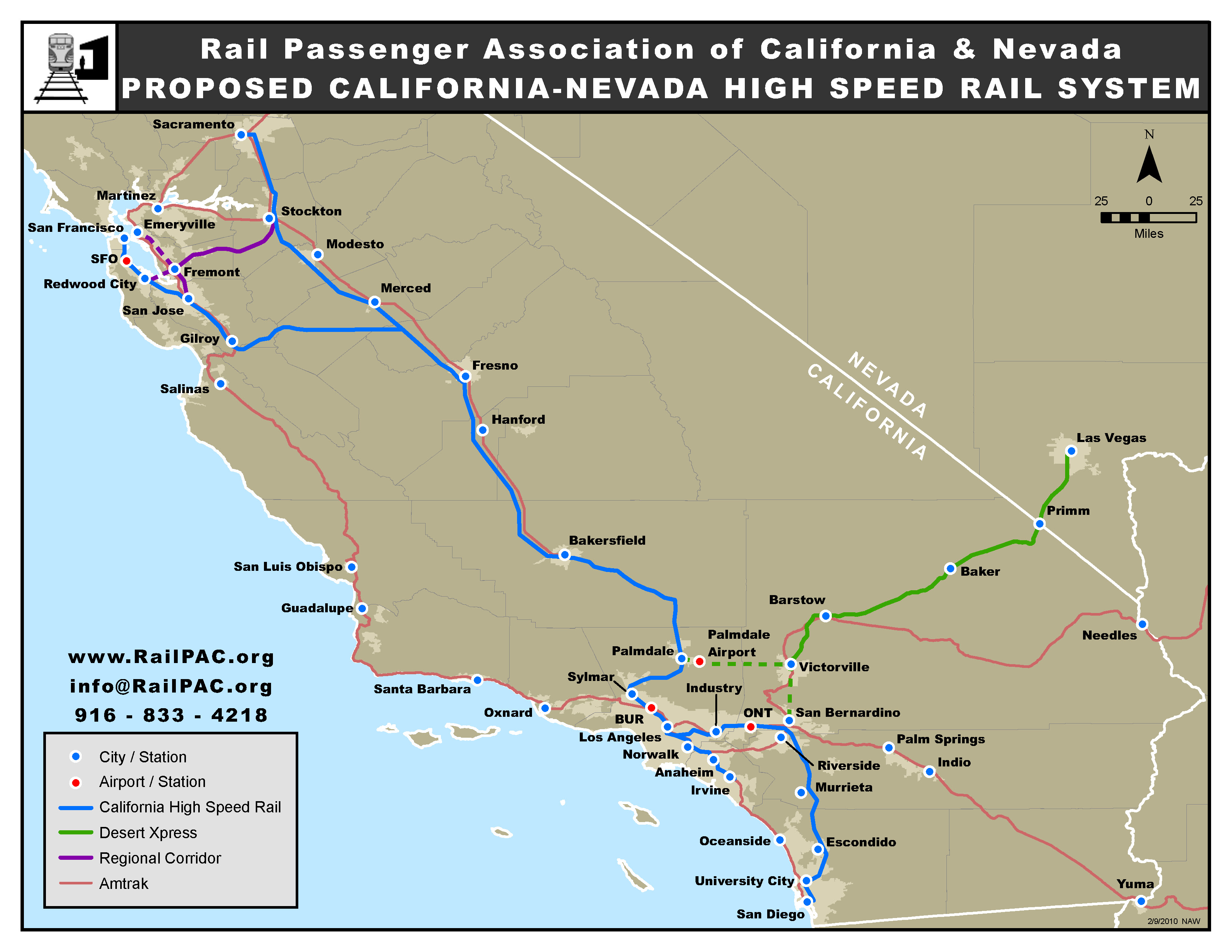World Updates | Update information about politics and social around the world
High-Speed Rail Extension: Enhanced Connectivity And Regional Revitalization
Have you heard of High-Speed Rail Extension: Enhanced Connectivity And Regional Revitalization? It have published today. It a big step in the world of transportation and regional development. It will connect major cities and regions, making it easier for people to travel and do business. It will also help to revitalize rural areas by providing new economic opportunities.

Orlando high-speed rail extension completed | TheCivilEngineer.org - Source www.thecivilengineer.org
Editor's Note: High-Speed Rail Extension: Enhanced Connectivity And Regional Revitalization have published today, September 12, 2023. This topic important to read because it can help your business stay ahead of the curve and take advantage of the opportunities that High-Speed Rail Extension: Enhanced Connectivity And Regional Revitalization will bring.
We've done some analysis, digging information, made High-Speed Rail Extension: Enhanced Connectivity And Regional Revitalization to put together this High-Speed Rail Extension: Enhanced Connectivity And Regional Revitalization guide to help you make the right decision.
| Key Differences | Key Takeaways |
|---|---|
|
|
|
Transition to main article topics
FAQ
The introduction of high-speed rail extensions promises to revolutionize transportation networks, fostering economic growth and elevating regional vitality. To address frequently encountered inquiries and clarify potential misconceptions, we present this comprehensive FAQ.

Connectivity Works for High Speed Rail Too – RailPAC - Source www.railpac.org
Question 1: How does high-speed rail enhance connectivity?
High-speed rail systems establish seamless and rapid links between cities, reducing travel times and eliminating geographical barriers. This enhanced connectivity facilitates business expansion, promotes tourism, and strengthens social bonds within the region.
Question 2: What economic benefits accompany high-speed rail implementation?
High-speed rail serves as a catalyst for economic development, stimulating job creation in industries such as construction, tourism, and logistics. Improved transportation efficiency attracts businesses and investments, fostering a flourishing regional economy.
Question 3: How does high-speed rail contribute to regional revitalization?
By connecting smaller towns and rural areas to major urban hubs, high-speed rail revitalizes these communities. Enhanced accessibility promotes economic growth, boosts tourism, and provides new opportunities for residents, reversing the trend of population decline and urban sprawl.
Question 4: What environmental advantages does high-speed rail offer?
High-speed rail significantly reduces carbon emissions compared to air and road transportation. By promoting a shift towards sustainable modes of travel, it contributes to environmental protection and the fight against climate change.
Question 5: How does high-speed rail impact land use and urban development?
High-speed rail stations often serve as hubs for commercial and residential development, creating vibrant mixed-use communities. By encouraging higher-density development around stations, high-speed rail promotes efficient land use and reduces urban sprawl.
Question 6: What technological advancements support high-speed rail operations?
High-speed rail systems rely on sophisticated technologies, including advanced signaling systems, aerodynamic train designs, and cutting-edge track technologies. These advancements ensure safety, efficiency, and passenger comfort.
In conclusion, high-speed rail extensions are instrumental in enhancing connectivity, driving economic growth, revitalizing regions, protecting the environment, and fostering innovative urban development. Embracing this transformative infrastructure solution unlocks a multitude of benefits for communities and economies alike.
Proceeding to the next article section:
Tips
For more information about high-speed rail extension, read High-Speed Rail Extension: Enhanced Connectivity And Regional Revitalization here.
Tip 1: Integrate High-Speed Rail with Existing Infrastructure
By connecting high-speed rail lines to airports, bus terminals, and other transportation hubs, cities can create a seamless and efficient multimodal transportation system. This integration allows travelers to easily transfer between different modes of transportation, reducing travel times and improving the overall user experience.
Tip 2: Prioritize Accessibility for All
To ensure that high-speed rail benefits all members of the community, it is crucial to consider accessibility. This includes providing accessible stations, trains, and ticketing systems for individuals with disabilities and the elderly. By prioritizing accessibility, high-speed rail can promote social inclusion and equity.
Tip 3: Foster Economic Development through Job Creation
High-speed rail projects generate numerous job opportunities during construction and operation. These jobs include engineering, construction, maintenance, and operations positions. By investing in high-speed rail, cities can create new employment opportunities, boost local economies, and attract skilled workers.
Tip 4: Promote Regional Collaboration and Tourism
High-speed rail connects regions and makes travel more convenient. This increased connectivity can foster regional collaboration, facilitate business partnerships, and attract tourists. By promoting regional tourism, high-speed rail can contribute to the economic vitality of multiple cities and towns along the line.
Tip 5: Enhance Quality of Life and Urban Vibrancy
High-speed rail can improve quality of life by reducing commute times, providing access to employment and education opportunities, and connecting people to cultural and recreational amenities. By reducing traffic congestion and improving air quality, high-speed rail can also contribute to a healthier and more livable urban environment.
High-Speed Rail Extension: Enhanced Connectivity And Regional Revitalization
High-Speed Rail (HSR) extensions have become pivotal in driving regional growth and prosperity. They enhance connectivity, foster economic development, and promote social cohesion. Six key aspects are crucial to comprehending their multifaceted impact:
- Faster Commute Times: HSR reduces travel time, connecting distant regions seamlessly.
- Increased Accessibility: HSR expands access to urban centers, unlocking opportunities for employment and education.
- Economic Stimulation: HSR investments create jobs, boost tourism, and attract new businesses to the region.
- Regional Integration: HSR links cities and towns, fostering collaboration and strengthening regional identity.
- Environmental Benefits: HSR promotes sustainable transportation, reducing carbon emissions and air pollution.
- Improved Quality of Life: HSR enhances work-life balance, allowing commuters to optimize their time and enjoy a better quality of life.
These aspects are interconnected and reinforce each other, creating a virtuous cycle of development. For instance, faster commute times attract skilled workers to the region, leading to economic growth and increased demand for housing and services. In turn, better connectivity and accessibility enhance the overall quality of life and well-being of residents.

MI scar rail extension - Source www.firearmstalk.com
High-Speed Rail Extension: Enhanced Connectivity And Regional Revitalization
High-speed rail extensions profoundly enhance connectivity and stimulate regional revitalization. These advanced rail systems reduce travel time, fostering seamless intercity transportation and promoting economic growth. Improved accessibility connects businesses to broader markets, facilitates talent attraction, and enhances tourism. Moreover, the construction and operation of high-speed rail lines create job opportunities, boost local economies, and catalyze urban development.

MIDWEST SSR SCAR RAIL EXTENSION BLK | US Patriot Armory - Source uspatriotarmory.com
For instance, the extension of China's high-speed rail network has transformed regional economies. The Beijing-Shanghai high-speed line has spurred growth in cities along its route, attracting investment, creating jobs, and boosting tourism. Similarly, Japan's Shinkansen bullet train system has revolutionized intercity travel, connecting major urban centers and fostering economic development throughout the country.
The practical significance of this connection lies in the transformative impact high-speed rail extensions have on regional economies. By enhancing connectivity, they unlock new economic opportunities, foster innovation, and promote sustainable growth. Understanding this connection is crucial for policymakers seeking to drive economic development and improve the quality of life in regions across the globe.
Conclusion
In conclusion, high-speed rail extensions are catalysts for enhanced connectivity and regional revitalization. They bridge distances, foster economic growth, and create vibrant, sustainable communities. The exploration of this connection highlights the transformative potential of these advanced transportation systems and underscores their importance in shaping the future of regional development. As we look ahead, continued investment in high-speed rail extensions will be essential for unlocking economic opportunities, driving innovation, and ensuring the prosperity of regions worldwide.
The future of regional development is inextricably linked to the advancement of high-speed rail networks. By embracing the transformative potential of these systems, we can create more connected, prosperous, and sustainable regions that will drive economic growth and improve the quality of life for generations to come.